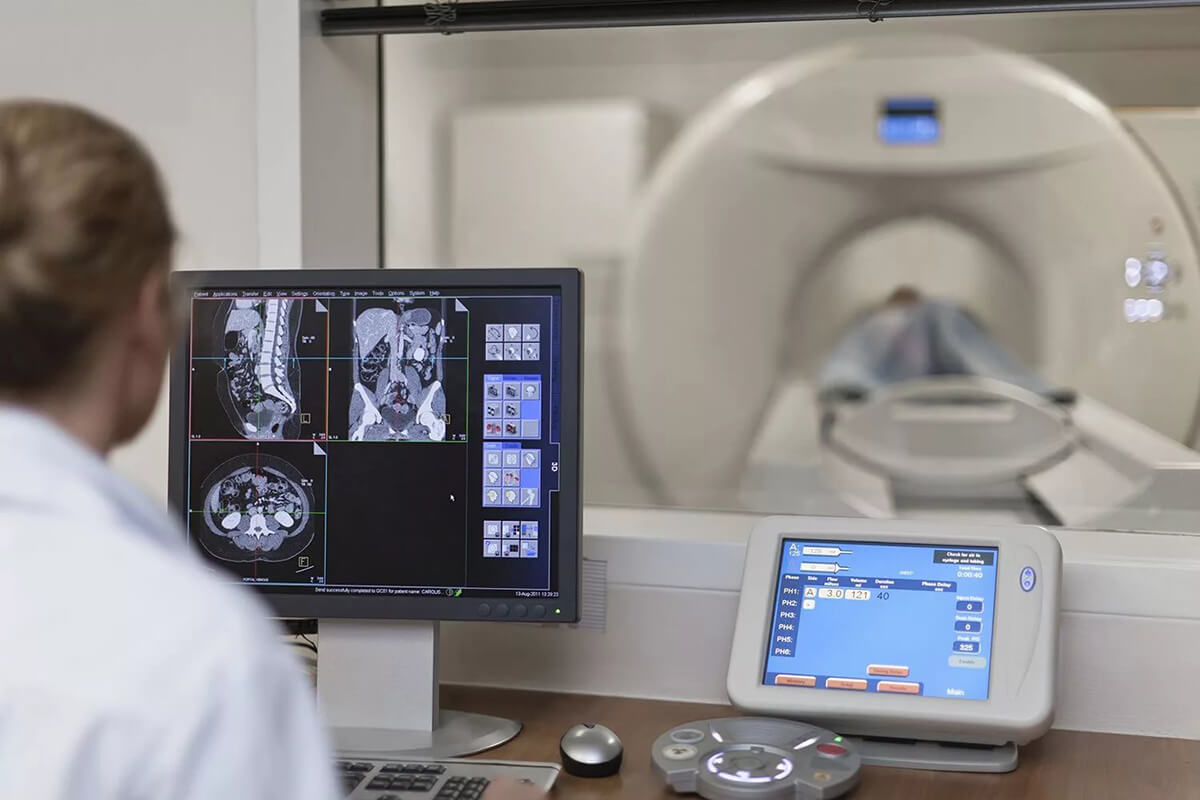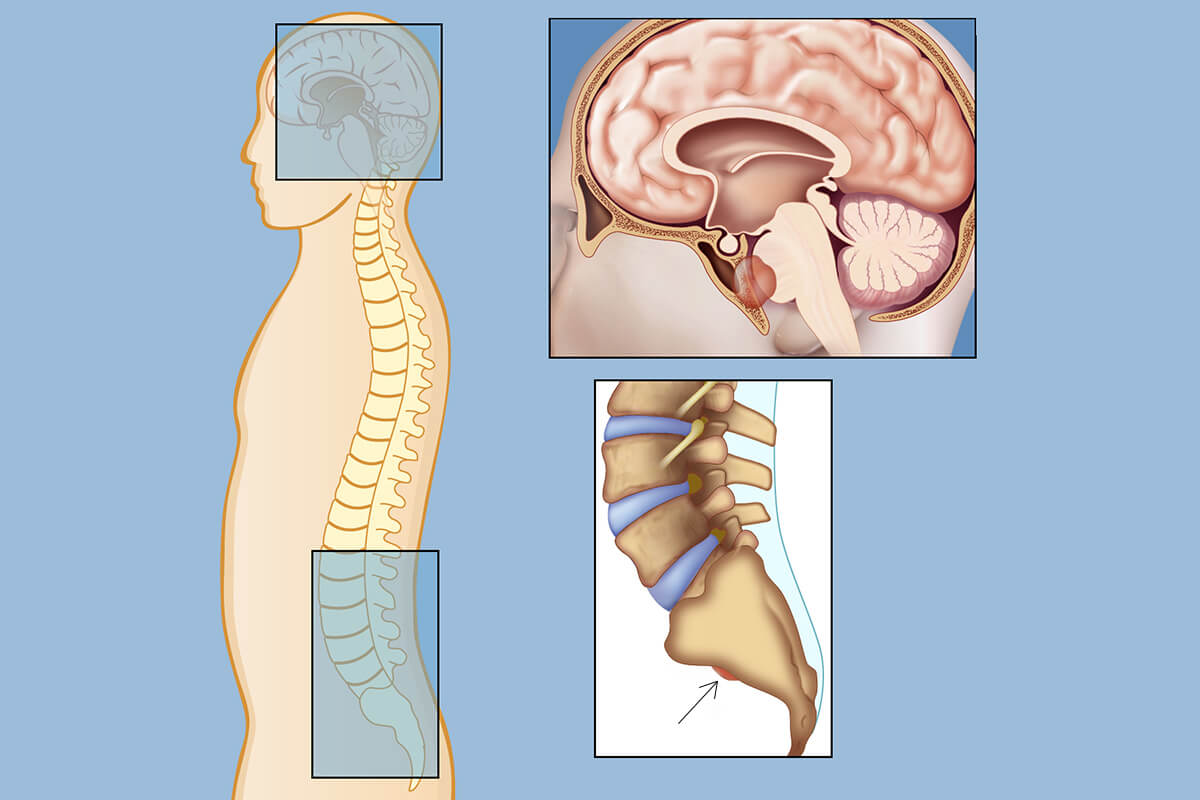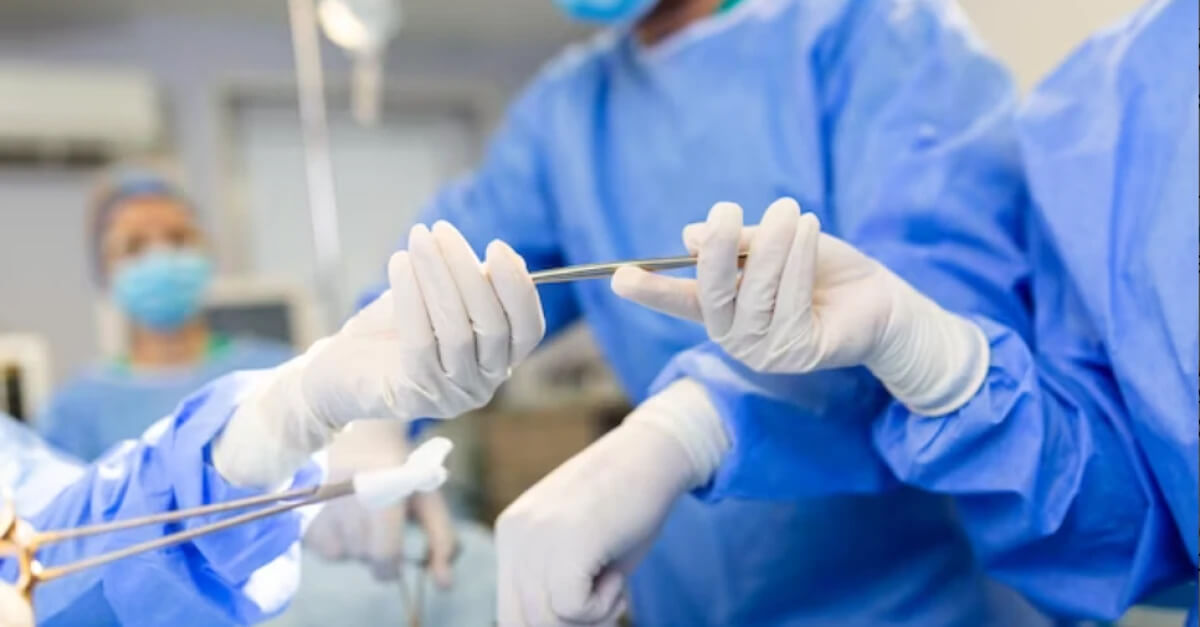Calls for Ukraine
Calls for Europe
Calls for USA

Chordoma is a tumor that can be of varying degrees of malignancy and occurs in close proximity to the spine. This neoplasm can be found at any level, but usually develops in the lumbosacral spine (more than 80%) or the occipitobasilar region of the skull (approximately 15%).
Chordoma occurs in both men and women, but this pathology is diagnosed more often in men. The age at which chordoma is detected depends on the location of the disease. So, if this pathology develops in the skull area, it is most often diagnosed at 20-45 years of age. If it develops in the sacrum area, it is usually detected at 45-60 years of age.
This is a rather dangerous and aggressive neoplasm that poses a significant threat to the patient’s life and is quite difficult to treat. Therefore, when detecting chordoma, it is very important to get to the best doctors and receive adequate medical care. The MedTour platform will help you find a clinic and a doctor who will be competent in treating this disease and will help maximize your chances of defeating the disease.
Would you like a free consultation?
To choose the best doctor and sign up for a consultation at the clinic, leave a request on the MedTour website. The medical coordinator will help you choose a doctor and select the best clinic, taking into account your wishes.
Free consultation
The definitive causes of spinal chordomas are unknown. However, they are known to arise from the notochord. The notochord is present in the embryo during intrauterine development and is the precursor of the spine. The spine then forms, but individual cells of the notochord may remain in the body. Why it happens that over time a tumor develops from them is currently not clear.

This tumor may differ in appearance depending on the type of tumor. But, as a rule, it is a node that has a lobular structure and is located in a thick-walled capsule. The contents of this node are translucent grayish-white with foci of necrosis. If we examine the contents of the chordoma under a microscope, we can see that the tumor cells have different sizes. Inside such cells you can see large vacuoles and small nuclei, due to which they look like vesicles.
The symptoms of this pathology may differ depending on where exactly the tumor is located, but there are also general symptoms inherent in this disease:
Symptoms characteristic of sacral chordoma:
Symptoms that may occur with chordoma at the base of the skull:
If the disease progresses, the tumor can grow into bones and other tissues, metastasize to the lymph nodes, lungs and liver. With this development of events, blood in the saliva, coughing up blood, ascites, jaundice and other symptoms may be observed, indicating disturbances in the functioning of the organs affected by metastasis.
Doctors distinguish three types of chordomas:

A comprehensive examination for suspected chordoma includes the following methods:
The MedTour platform will help you undergo examinations using the latest generation medical diagnostic devices, make the necessary laboratory diagnostics and obtain an accurate diagnosis, which is important for selecting the most effective treatment.
Would you like a free consultation?
To choose the best doctor and sign up for a consultation at the clinic, leave a request on the MedTour website. The medical coordinator will help you choose a doctor and select the best clinic, taking into account your wishes.
Free consultation
On average, about 60% of patients who are diagnosed with chordoma live for 5 years or more. However, these are very general figures. The forecast can change noticeably in one direction or another depending on a number of factors. Life expectancy with this disease is affected by:
MedTour will help you find clinics and specialists who use the most advanced treatment methods and demonstrate good results in treating this disease.
Would you like a free consultation?
To choose the best doctor and sign up for a consultation at the clinic, leave a request on the MedTour website. The medical coordinator will help you choose a doctor and select the best clinic, taking into account your wishes.
Free consultation
This disease is quite difficult to treat, since it responds poorly to some standard therapies for malignant diseases. Thus, traditional chemotherapy for chordoma is practically not used, because the cells of this type of tumor do not respond to chemotherapy. The only exceptions are rare dedifferentiated tumors, in which this method can have a positive effect. For other types of chordomas, treatment may include surgery, radiation therapy, and targeted therapy.

The most effective treatment for chordoma is surgical removal of the tumor. However, chordomas are located close to vital structures, making their removal quite challenging. If events develop favorably, surgeons are able to remove the chordoma completely along with the capsule. If this cannot be done, the tumor is partially removed in order to reduce the pressure of the tumor on the nerve structures.
In foreign clinics, special endoscopic equipment can be used for surgical intervention. This allows less trauma to healthy tissue and removal of chordoma with high precision. For example, if the tumor is located at the base of the skull, an endonasal or transoral approach may be used. In this case, there are no visible scars left after the procedure. Such operations are easier to tolerate and the recovery period after them is much shorter.
Radiotherapy is usually used as an additional method after surgery. The goal of radiation in this case is to destroy single malignant cells that may remain after surgical removal of the tumor. However, the use of this technique can be fraught with difficulties, since the chordoma is often located near vital brain structures that cannot be exposed to strong radiation effects. Therefore, proton therapy is commonly used for chordoma. This is a type of radiation therapy that uses proton beams. Due to this, doctors can apply a sufficiently high dose of radiation, and at the same time healthy tissues will not receive critical damage.
Doctors may also prescribe intensity-modulated radiation therapy (IMRT) for this disease. Using this technique, it is possible to direct the rays to the tumor with high precision and not touch healthy tissues of the body.
Stereotactic surgery is another type of radiation therapy that can be used instead of surgery. If the tumor is too close to the spinal cord or brain and it is too difficult to remove it surgically without damaging vital structures, doctors may choose CyberKnife as a treatment alternative to surgery.
During the procedure, the patient lies on a special table, and the manipulator arm of the device moves above him and directs beams of high-intensity radiation at the tumor from different angles. In this way, high doses of radiation can be delivered with a high degree of precision without damaging healthy tissue. Oncologists use CyberKnife to treat both small tumors of 3-5 millimeters and fairly large tumors up to 5-6 centimeters.

Today, several targeted therapy drugs are undergoing clinical trials and are being used in experimental treatment of chordomas. For example, a clinical trial conducted in Italy using a tyrosine kinase inhibitor demonstrated a moderate response in some patients with chordoma. There is also information that EGFR inhibitors are effective in chordoma. However, the search for drugs that will allow targeted action on tumor cells is currently ongoing. Doctors and scientists are constantly looking for new drugs that can improve the effectiveness of chordoma treatment.
To learn about the most progressive and effective methods of treating the disease, contact the MedTour coordinating doctor.
Would you like a free consultation?
To choose the best doctor and sign up for a consultation at the clinic, leave a request on the MedTour website. The medical coordinator will help you choose a doctor and select the best clinic, taking into account your wishes.
Free consultation
In order to choose the most effective treatment tactics for chordoma, it is necessary to contact medical centers that specialize in the treatment of this disease. The MedTour platform works with clinics that occupy leading positions in world rankings among institutions dealing with malignant pathologies. For example, you can go to the famous Turkish multidisciplinary Medipol University Hospital, choose one of the best medical institutions in South Korea, the Samsung Medical Center, or go to the famous private medical center in Barcelona, Teknon Medical Center.
You can get acquainted with leading clinics for the treatment and diagnosis of chordoma on our website. To make the final choice of a medical center for further treatment, contact our specialists for help. MedTour coordinator doctors will tell you about different options and possibilities and help you choose the best clinic for free, taking into account your needs.
Would you like a free consultation?
To choose the best doctor and sign up for a consultation at the clinic, leave a request on the MedTour website. The medical coordinator will help you choose a doctor and select the best clinic, taking into account your wishes.
Free consultation
Choosing a good doctor is one of the most important steps on the path to effective treatment of the disease. A qualified specialist will be able to correctly assess your condition and choose the most appropriate treatment methods in your case.
MedTour will help you find a doctor with extensive experience and a good reputation, by contacting whom you can use all the possibilities to fight the disease. To choose an experienced specialist who treats chordomas, contact your MedTour coordinator.
Would you like a free consultation?
To choose the best doctor and sign up for a consultation at the clinic, leave a request on the MedTour website. The medical coordinator will help you choose a doctor and select the best clinic, taking into account your wishes.
Free consultation
Please rate the work of MedTour
